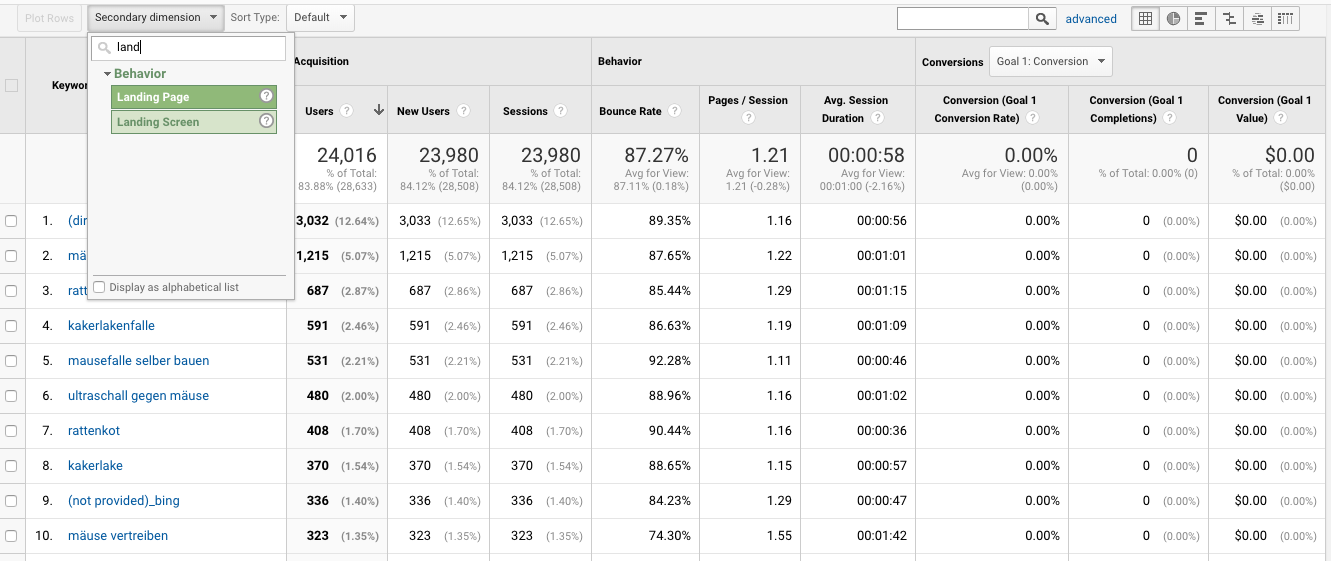Optimizing Data Analysis: Google Analytics Secondary Dimension Explained
Optimizing Data Analysis: Google Analytics Secondary Dimension Explained
Blog Article
Opening the Power of Second Measurement Analytics for Enhanced Information Insights and Decision-Making
In the realm of data analytics, key dimensions often take the spotlight, however the real depth of understandings lies within the realm of second measurements. By taking advantage of the power of additional dimension analytics, companies can unveil hidden patterns, discover connections, and remove extra purposeful conclusions from their data.
Importance of Secondary Measurements
Checking out the significance of secondary dimensions in analytics introduces the covert layers of data insights essential for educated decision-making in different domain names. Second dimensions offer a deeper understanding of primary data by providing added context and point of views. By including second measurements right into analytics, organizations can remove a lot more comprehensive and nuanced insights from their datasets.
One key significance of secondary dimensions is their ability to sector and categorize main information, enabling a much more in-depth evaluation of particular subsets within a dataset. When looking at the information as a whole, this division enables services to determine patterns, fads, and outliers that might not be evident. Second measurements help in uncovering correlations and dependencies between various variables, leading to more accurate projecting and predictive modeling - secondary dimension.
Additionally, secondary dimensions play an important function in improving data visualization and coverage. By adding secondary measurements to visualizations, such as charts or graphes, analysts can create a lot more informative and informative depictions of data, assisting in much better communication of findings to stakeholders. Generally, the combination of secondary dimensions in analytics contributes in opening the complete capacity of information and driving evidence-based decision-making.
Trick Benefits of Making Use Of Additional Measurements
Making use of additional dimensions in analytics provides organizations a tactical advantage by enhancing the depth and granularity of information understandings. By exploring information utilizing secondary measurements such as time, place, device kind, or individual demographics, companies can discover patterns, patterns, and connections that may or else stay concealed.
Additionally, the usage of secondary measurements enhances the context in which key information is translated. It offers a more thorough view of the relationships between different variables, enabling companies to make enlightened choices based on an extra holistic understanding of their information. Furthermore, secondary dimensions promote the recognition of outliers, abnormalities, and locations for optimization, ultimately causing more effective techniques and enhanced results. By leveraging second measurements in analytics, companies can harness the complete potential of their information to drive far better decision-making and achieve their organization purposes.
Advanced Data Analysis Strategies
A deep study innovative information evaluation techniques exposes sophisticated methods for removing useful understandings from complicated datasets. One such technique is get redirected here artificial intelligence, where algorithms are used to recognize patterns within data, anticipate outcomes, and make data-driven choices. This approach enables the automation of logical version structure, making it possible for the processing of large volumes of information at a much faster pace than traditional approaches.
One more sophisticated method is anticipating analytics, which utilizes statistical formulas and machine understanding techniques to anticipate future end results based upon historical data. By assessing patterns and fads, businesses can expect customer habits, market patterns, and potential dangers, empowering them to make proactive decisions.
Moreover, message mining and view analysis are important methods for removing understandings from unstructured data resources such as social media sites comments, client testimonials, and survey feedbacks. By examining message data, companies can recognize consumer point of views, recognize arising fads, and boost their items or solutions based on feedback.
Enhancing Decision-Making Via Second Measurements

Enhancing decision-making via second measurements makes it possible for services to make even more informed and targeted calculated choices. For instance, by segmenting customer data based upon second measurements like purchasing history or involvement degrees, companies can customize their advertising strategies to certain target market sectors, resulting in improved conversion rates and customer fulfillment. Moreover, additional measurements can aid determine correlations and partnerships between various variables, allowing organizations to make data-driven choices that drive development and success.
Applying Second Dimension Analytics
When integrating second measurements in analytics, companies can unlock deeper understandings that drive calculated decision-making and enhance total performance. Executing additional measurement analytics needs an organized approach to make certain effective usage of this powerful device. The very first step is to determine the essential metrics and dimensions that align with the organization's tactical goals. This requires recognizing the particular inquiries the organization looks for to answer and the data factors called for to resolve them.

In addition, companies need to utilize progressed analytics devices and innovations to simplify the process of integrating additional measurements. here are the findings These tools can automate information handling, evaluation, and visualization, allowing companies to concentrate on analyzing understandings as opposed to hands-on information manipulation.
Conclusion
In verdict, secondary dimension analytics play a vital duty in improving information understandings and decision-making procedures. By using innovative data analysis techniques and applying secondary measurements effectively, companies can unlock the power of their data to drive calculated business decisions.
In the realm of data analytics, main measurements usually take the limelight, however the true depth of insights exists within the world of second dimensions.Using secondary dimensions in analytics uses companies a strategic advantage by enhancing the depth and granularity of information insights. By leveraging additional measurements in analytics, organizations can harness the complete potential of their data to drive better decision-making and accomplish their business objectives.
Implementing data validation procedures and regular audits can assist preserve data quality and reliability.
By making use of advanced data evaluation strategies and executing additional measurements efficiently, organizations can unlock the power of their information to drive strategic company decisions.
Report this page